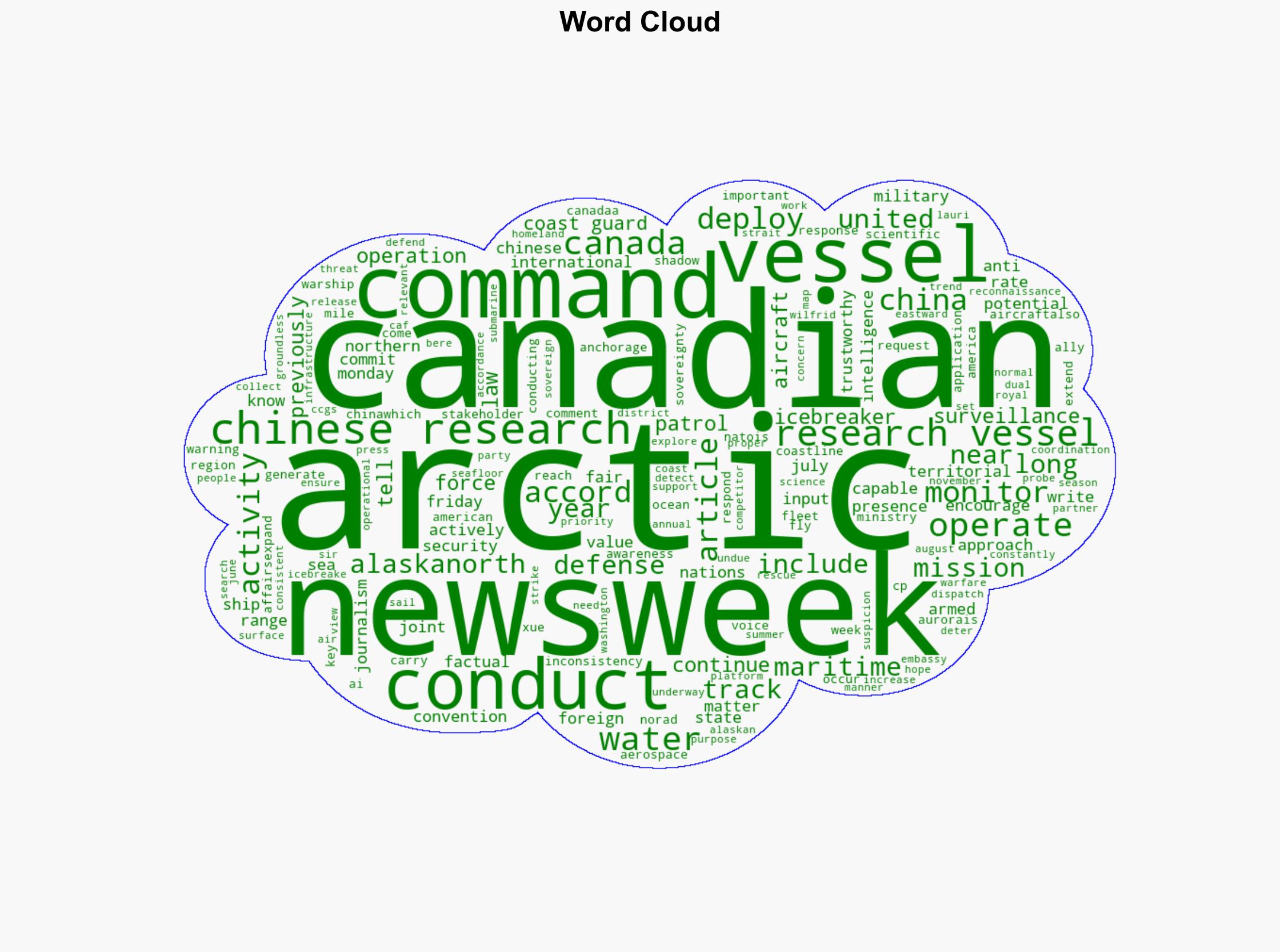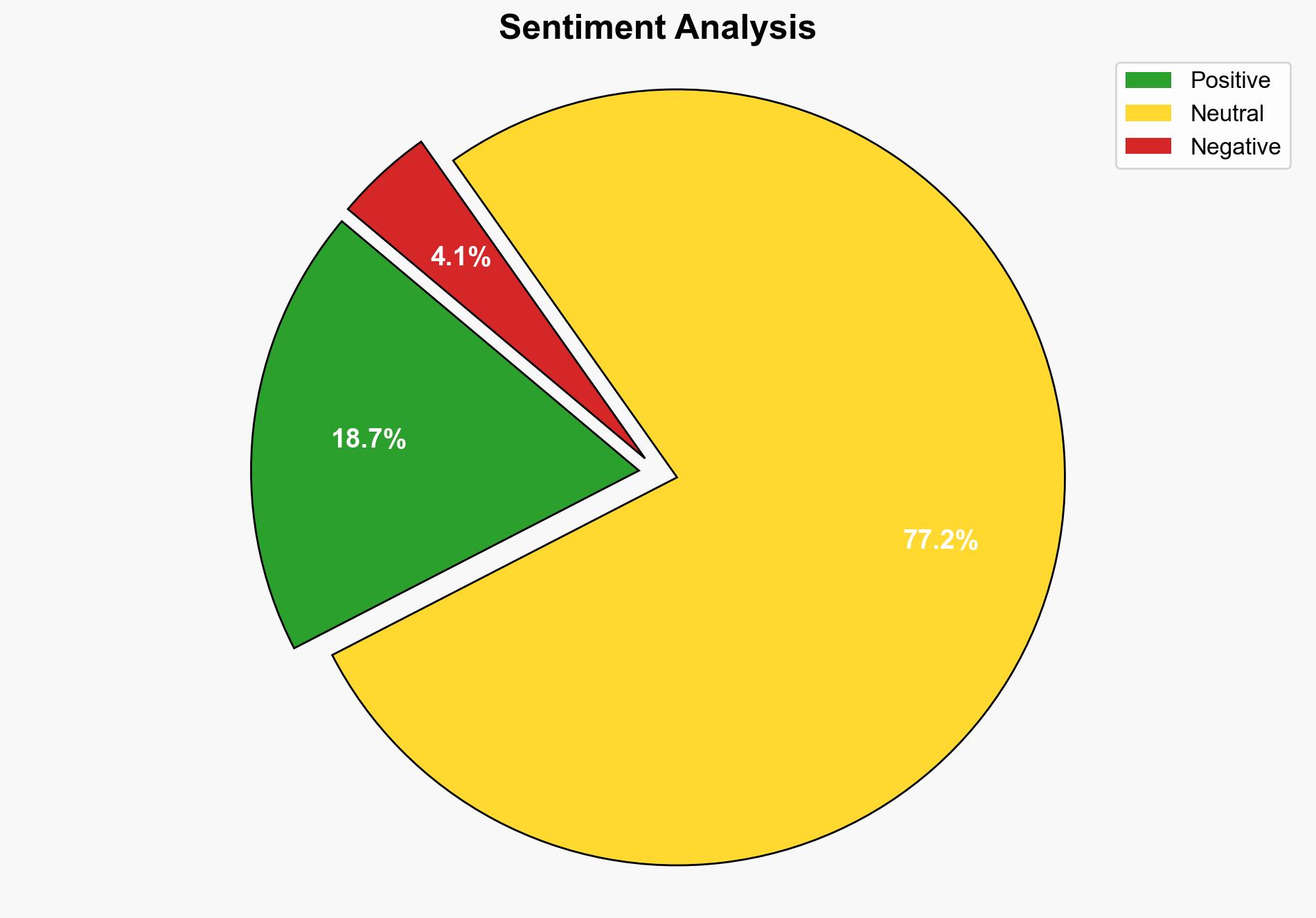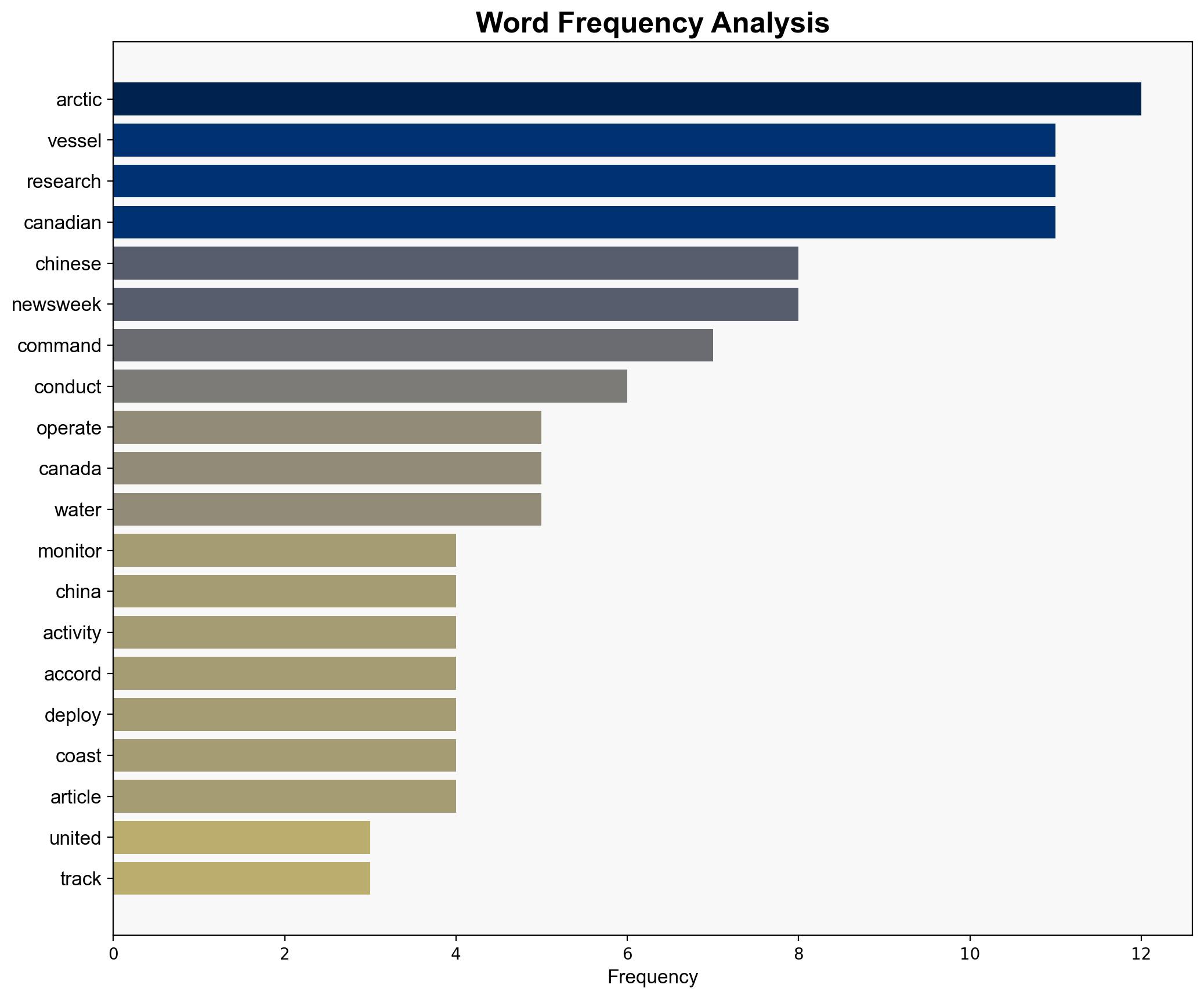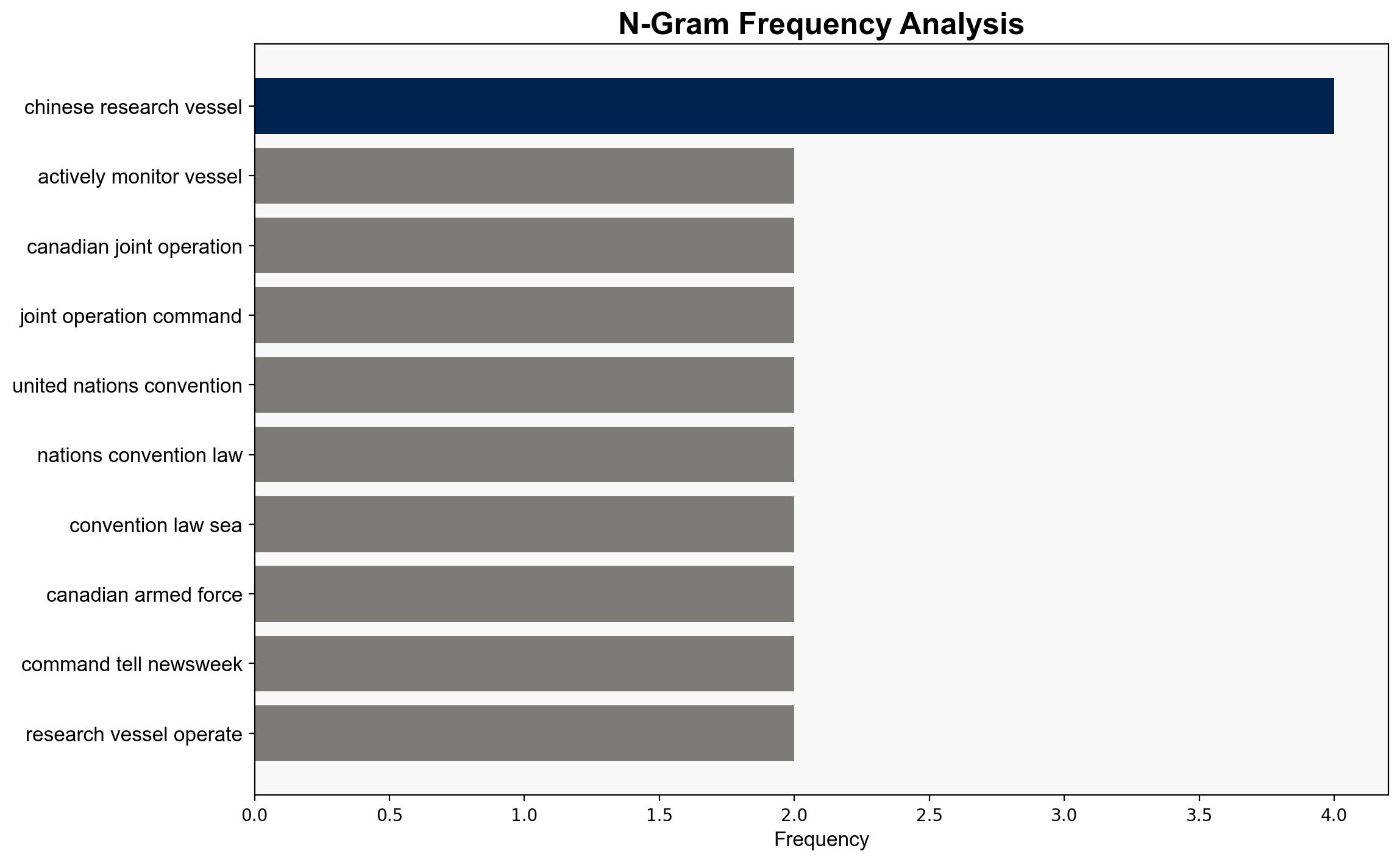Canada Helps US Keep Tabs on China Near Alaska – Newsweek
Published on: 2025-08-12
Intelligence Report: Canada Helps US Keep Tabs on China Near Alaska – Newsweek
1. BLUF (Bottom Line Up Front)
The most supported hypothesis is that China’s increased presence in the Arctic, under the guise of scientific research, is part of a broader strategic initiative to assert influence and gather intelligence in the region. Confidence level: Moderate. Recommended action: Enhance joint surveillance efforts and diplomatic engagement to address potential security concerns while maintaining open communication channels with China.
2. Competing Hypotheses
Hypothesis 1: China’s deployment of research vessels in the Arctic is primarily for scientific purposes, with secondary benefits of intelligence gathering. This aligns with China’s stated interest in Arctic research and international cooperation under the United Nations Convention on the Law of the Sea (UNCLOS).
Hypothesis 2: China’s Arctic activities are strategically motivated, aiming to expand its geopolitical influence and establish a foothold in the region. The research vessels serve dual purposes, including surveillance and potential military applications, under the guise of scientific exploration.
Using ACH 2.0, Hypothesis 2 is better supported due to the pattern of increased Chinese activity in the Arctic, the dual-use nature of the vessels, and the strategic importance of the region.
3. Key Assumptions and Red Flags
Assumptions include the belief that China’s activities are consistent with international law and that increased presence does not necessarily equate to hostile intentions. Red flags include the dual-use capability of the research vessels and the lack of transparency regarding the full scope of their missions. Potential cognitive bias includes confirmation bias towards viewing China’s actions as aggressive.
4. Implications and Strategic Risks
China’s activities could lead to increased geopolitical tension in the Arctic, potentially involving other stakeholders like Russia. There is a risk of misinterpretation or escalation if surveillance is perceived as hostile. Economically, control over Arctic routes could impact global trade dynamics. Cybersecurity risks may arise from increased electronic intelligence gathering.
5. Recommendations and Outlook
- Enhance joint surveillance and intelligence-sharing mechanisms between Canada and the US to monitor Chinese activities effectively.
- Engage in diplomatic dialogue with China to clarify intentions and establish confidence-building measures.
- Scenario-based projections:
- Best Case: China cooperates with Arctic nations, focusing on scientific collaboration.
- Worst Case: Increased militarization and geopolitical tension in the Arctic.
- Most Likely: Continued strategic maneuvering by China with periodic diplomatic engagements.
6. Key Individuals and Entities
– Canadian Joint Operation Command
– Chinese Foreign Ministry
– Royal Canadian Air Force
7. Thematic Tags
national security threats, Arctic strategy, geopolitical influence, intelligence gathering




